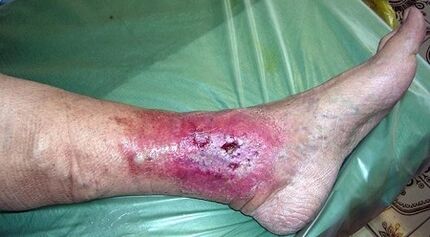Different vessels of the lower limbs are an extremely emergency problem of modernity.In order to understand why the disease develops and how it can be cured, it is necessary to recall the anatomical characteristics of the structure of the circulatory system.
What are varicose veins of superficial veins?
The main task of the venous leg system is to transport blood from the bottom up.For this purpose, there are valves in the veins - they direct blood from their feet to heart.
In addition, for proper functioning, the vessels are divided into 3 groups:
- Surface.They are located near the skin and are most often subjected to varicose enlargement.
- Deep.This group of vessels flows between the muscle fibers.
- Others.Their task is to ensure the connection between the surface and the deep vessels.
Why develop varicose veins of the superficial veins?

The vessels can be increased several times in a diameter.
This process is influenced by such factors as:
- Heredity.But genetic origin alone is not sufficient for the development of pathology.A responsible attitude towards the prevention of the disease is able to prevent the development of varicose veins.
- Pregnancy, birth, menopause or taking hormonal medicines.Often the formation of the disease in women is at the heart of these causes.
- A passive lifestyle.The less they work on the wire muscles, the greater the chance of developing varicose diseases.
How are varicose veins of the superficial veins manifested?
The symptoms of the disease can be divided into external (cosmetic) and basic.The external manifestations of varicose veins of the superficial veins include enlarged nodes, winding veins of the legs, change in the skin (especially pigmentation and dryness in the ankle area - the skin here is sensitive and thin).
The main symptoms include:
- Pain and sensations of “strong legs”
- Swelling.Sometimes the swelling is so pronounced that the usual size of the shoes becomes small.
- Legs with varicose veins itching.
- Vienna throbs.
What can be dangerous varicose veins of the superficial veins?

The danger is not in the disease itself, but in its complications.
With varicose veins, the chances of developing blood clots in the vessels increase several times.If the blood clot is formed in the veins of the legs and detached from the venous wall, then with a blood flow, it can easily enter the vessels of the lungs.
Blocking the pulmonary artery often causes death.In addition, trophic ulcers are often formed on the ankles.The infection of the infection in this case leads to unpleasant consequences (Suppuration, Sepsis).
How to treat varicose veins of superficial veins?
Extended veins are not restored.The removal of radical vessels is required to determine the blood circulation.Fortunately, today it is not difficult to eliminate enlarged surface veins.
Laser and radio frequency energy are used for these purposes.In the process of removal, the patient remains conscious and does not feel anything (this is possible by the use of local anesthesia).In addition, you can go home immediately after surgery and such methods leave no trace of the procedure.
In addition to surgery, good tablets of varicose veins, sclerotherapy, cream and legs, as well as recipes for traditional medicine are used.Among these methods, it is worth emphasizing sclerotherapy - as an innovative way to combat the original varicose veins.It is possible to act on small varicose veins and capillaries.
The varicose veins of the superficial veins can and must be prevented.To do this, actively move, eat properly and be sure to visit a phlebologist 2 times a year for planned examination and diagnosis of the condition of the vessels of the legs.























